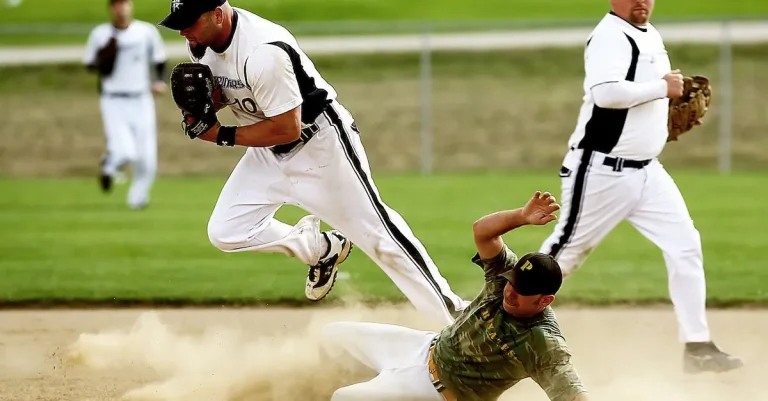The Unique Accents And Dialects Of Upstate New York
If you’ve ever traveled to upstate New York, you may have noticed the unique accents and dialects spoken by the locals. From the iconic Brooklyn accent to the more subtle central New York accent, the diverse voices of upstate New Yorkers reflect the area’s rich cultural history.
There are several distinct accents and dialects across upstate New York. While the New York City metropolitan area is known for its fast-paced speech, the accents of upstate New York tend to be slower, with more rounded vowels. If you’re wondering about the linguistic landscape of upstate New York, read on to learn more about these distinctive ways of speaking.
The New York City Accent
The New York City accent is one of the most recognizable accents in the United States. It is a distinctive dialect that developed in the diverse neighborhoods of the city and has been influenced by various immigrant groups throughout history.
Origins and Influences
The origins of the New York City accent can be traced back to the early 19th century when waves of immigrants, primarily from Ireland and Germany, settled in the city. These immigrants brought with them their own languages and dialects, which eventually merged with the existing English spoken in the area.
Over time, the New York City accent has been shaped by the influence of other immigrant groups, such as Italians, Jews, and Puerto Ricans. Each group has contributed its own linguistic nuances and pronunciation patterns to the evolving dialect.
Another significant influence on the New York City accent is the African American community, particularly in neighborhoods like Harlem. African American Vernacular English (AAVE) has had a noticeable impact on the speech patterns and vocabulary of New Yorkers.
Distinctive Features and Sounds
The New York City accent is characterized by several distinctive features and sounds. One of the most recognizable aspects is the pronunciation of certain vowels. For example, the “aw” sound in words like “talk” or “dog” is often pronounced as “aww,” giving it a distinct nasal quality.
Another notable feature is the dropping of the “r” sound at the end of words or syllables. This is known as non-rhoticity and is common in many East Coast dialects. So, instead of saying “car” or “park,” a New Yorker might say “cah” or “pahk.”
The New York City accent also includes unique vocabulary and expressions that are specific to the region. For instance, the term “bodega” is commonly used to refer to a small grocery store, while “stoop” is used to describe the steps leading up to a building’s entrance.
The Central New York Accent
Where It’s Spoken
The Central New York accent is primarily spoken in the central region of New York State, which includes cities such as Syracuse, Utica, and Binghamton. This accent is also known as the “Syracuse accent” due to its prevalence in the city.
It is important to note that accents can vary within a region, so there may be slight differences in pronunciation and dialect between cities and towns.
Language Features
The Central New York accent has several distinct features that set it apart from other accents in the state and the rest of the country. One notable feature is the pronunciation of certain vowel sounds.
For example, the “a” sound in words like “cat” and “bath” is often pronounced as a more nasal “æ” sound. Similarly, the “o” sound in words like “cot” and “coffee” is pronounced with a slight “aw” sound, almost like “cawt” and “cawffee”.
Another characteristic of the Central New York accent is the pronunciation of the “r” sound. Unlike in some other accents, where the “r” sound is often dropped or softened, in the Central New York accent, the “r” sound is pronounced more prominently. This is known as a “rhotic” accent.
Additionally, there are certain words and phrases that are unique to the Central New York dialect. For example, instead of saying “you guys” or “y’all” to refer to a group of people, Central New Yorkers often use the term “you’se” or “youse guys”.
This term is used in a similar way to “you all” or “you guys” in other parts of the country.
It is important to note that accents and dialects can evolve and change over time. The Central New York accent is no exception, and it may continue to evolve as new generations adopt different speech patterns and influences from other regions.
For more information on accents and dialects in Central New York, you can visit the Syracuse University website, which offers resources and studies on language and linguistics.
The Western New York Accent
The Western New York accent is a distinct dialect spoken in the western region of Upstate New York. This accent is characterized by unique pronunciation patterns and vowel sounds that set it apart from other accents in the state.
Geographic Range
The Western New York accent is primarily spoken in the cities of Buffalo, Rochester, and Syracuse, as well as the surrounding areas. It is most prevalent in the counties of Erie, Monroe, and Onondaga. However, variations of this accent can also be found in other parts of Upstate New York.
The influence of the Western New York accent extends beyond the state borders, with its reach extending into parts of neighboring Pennsylvania and Ontario, Canada. This can be attributed to historical migration patterns and cultural exchanges between these regions.
Vowel Sounds
One of the defining features of the Western New York accent is its unique vowel sounds. For example, the “a” sound in words like “bag” and “cat” is pronounced with a distinct nasal quality, often sounding more like “beg” and “cet”.
This is known as the “Northern Cities Vowel Shift,” which is also present in other regions of the Great Lakes area.
Another characteristic of the Western New York accent is the pronunciation of certain diphthongs. For instance, the “oi” sound in words like “oil” and “point” is pronounced more like “erl” and “pernt”. This pronunciation is reminiscent of the dialects spoken by early settlers in the region.
It’s important to note that while the Western New York accent may sound unique and distinct, it is just one of many accents and dialects that contribute to the rich linguistic diversity of Upstate New York.
For more information on dialects and accents in Upstate New York, you can visit the Upstate Medical University website, which provides valuable resources on regional language variations and linguistic research.
The North Country Accent
Areas Where It’s Spoken
The North Country accent is a unique dialect spoken in the northern regions of Upstate New York, particularly in the counties bordering Canada such as St. Lawrence, Franklin, and Clinton. It is also prevalent in towns along the St. Lawrence River and the Adirondack Mountains.
This distinct accent is influenced by the historical migration patterns of French-Canadians and Native Americans, as well as the isolation of the region due to its rugged terrain. The North Country accent is often associated with rural communities and small towns, where it has been passed down through generations.
If you ever find yourself in places like Plattsburgh, Massena, or Potsdam, you may notice the unique twang and pronunciation that characterize the North Country accent.
Distinctive Qualities
The North Country accent has several distinctive qualities that set it apart from other dialects in Upstate New York. One notable feature is the pronunciation of certain vowel sounds. For example, the “o” sound in words like “cot” and “not” is pronounced as a nasalized “aw” sound, similar to the Canadian “about.”
Another characteristic of the North Country accent is the dropping of the “r” sound at the end of words. This is known as the non-rhotic pronunciation, which is also found in certain dialects of British English. So, instead of saying “car,” a person with a North Country accent might say “cah.”
The North Country accent also includes unique vocabulary and idiomatic expressions that reflect the local culture and heritage. For instance, you might hear someone refer to a heavy snowfall as a “nor’easter” or use phrases like “up the road a piece” to indicate a short distance.
It’s important to note that the North Country accent is not uniform across the region. There may be variations in pronunciation and vocabulary between different towns and communities. However, the overall character of this accent remains consistent, showcasing the rich linguistic diversity of Upstate New York.
If you’re interested in learning more about the North Country accent, you can visit North Country Public Radio’s website for interviews and recordings of locals speaking with the distinctive accent.
Conclusion
The accents and dialects of upstate New York reflect the diverse heritage of the region. From the famous New York City accent to the unique North Country brogue, these ways of speaking give insight into the culture and history of upstate New York’s communities. The next time you visit the area, listen closely to the local voices – you just might pick up on some subtle but fascinating linguistic features.








